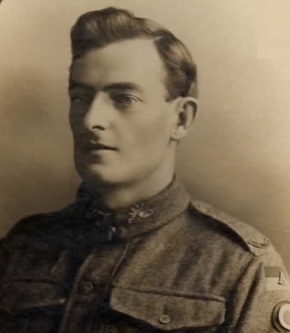
S5426
WARREN, Frederick Arnold
| Service Number: | 49 |
|---|---|
| Enlisted: | 19 August 1914, Morphettville, South Australia |
| Last Rank: | Driver |
| Last Unit: | 10th Infantry Battalion |
| Born: | Parkside, South Australia, 1 September 1889 |
| Home Town: | Adelaide, South Australia |
| Schooling: | Glanville State School |
| Occupation: | Builder's Labourer |
| Died: | Adelaide, South Australia, 28 November 1958, aged 69 years, cause of death not yet discovered |
| Cemetery: |
West Terrace Cemetery (General) Deceased Details and Site Information: Section - FLI Path Number - 8 E/W - E Site number - 34 |
| Memorials: |
World War 1 Service
| 19 Aug 1914: | Enlisted AIF WW1, Morphettville, South Australia | |
|---|---|---|
| 21 Oct 1914: | Involvement AIF WW1, Driver, 49, 10th Infantry Battalion, --- :embarkation_roll: roll_number: '10' embarkation_place: Adelaide embarkation_ship: HMAT Saldanha embarkation_ship_number: A12 public_note: '' | |
| 21 Oct 1914: | Embarked AIF WW1, Driver, 49, 10th Infantry Battalion, HMAT Saldanha, Adelaide | |
| 2 Mar 1915: | Involvement AIF WW1, Driver, 49, 10th Infantry Battalion, ANZAC / Gallipoli, Joined the Mediterranean Expeditionary Force |
Help us honour Frederick Arnold Warren's service by contributing information, stories, and images so that they can be preserved for future generations.
Add my storyBiography contributed by St Ignatius' College
Frederick Arnold Warren was born in Parkside on the 1st of September in 1889. He was raised by his mother Elizabeth Ellen Warren.
Frederick had two brothers, James John and Victor A Warren. He lived in their family home on Glen Osmond Road in Frewville, South Australia. Warren was an Anglican, a member of the Church of England. He attended Glanville State School and became a builder’s labourer. Warren enlisted in the war on the 19th of August in 1914, at the age of 24.
Frederick Arnold Warren served in Gallipoli, Egypt and on the Western Front. Frederick was registered as a driver and a signaller. A driver, equivalent to the rank of private, drove the teams of horses that pulled the guns and artillery and a signaller would send and receive signals. Frederick embarked from Adelaide on the S.S. Ascanius on the 20th of October in 1914.
The next record of Frederick’s movement was later on the 2nd of March in 1915, a few months later, in Alexandria, Egypt, where it can be assumed he trained before he joined the Mediterranean Expeditionary Forces, that commanded the allied forces at Gallipoli. There was no further record of Warren’s movements for a further seven months. It can be presumed that during this time, he travelled to and served in Gallipoli.
In October, Frederick was admitted to the 15th General Hospital in Alexandria, Egypt. A month later, Frederick was admitted to the British Red Cross Hospital with dysentery, a viral disease of the intestine which causes diarrhoea and abdominal pain. It’s likely that he caught dysentery whilst in Gallipoli, as it had become common amongst the soldiers. In December, he was discharged to base details, in which he would have been involved in the management and maintenance of the Alexandria base.
In March of 1916, Frederick was discharged from base details and returned to his unit. He joined the British Expeditionary Forces and was sent to Marseilles, France. Here, Frederick fought on the Western Front through to 1918. There are no details of the specific battles Frederick was involved in, but it can be assumed that he fought with his battalion in battles such as Bullecourt, Pozières, and Third Ypres. On the 19th of March 1918, Warren was sent to hospital from the field. He was transferred to the 2nd casualty clearing station with an accidentally bruised back. He then re-joined his battalion on the same day. In August, Frederick took leave in the United Kingdom for 17 days.
On the 14th of September in 1918, he set out for return to Australia. In the Suez Canal of Egypt, on the 13th of October, Frederick embarked on the S.S. Devon for Australia. On the 23rd of November, Fredrick disembarked in Melbourne and proceeded to his home in Adelaide.
Frederick Arnold first reflected the ANZAC spirit when he enlisted very early on in the war, and by doing so displayed bravery and patriotism for his country. Overall, Frederick served 4 years and 157 days in the army. He faced danger and potential death but continued to serve his country until the end of the war, showing his persistence and selflessness. He endured illnesses and disease but returned to the front consistently. One of the battles Frederick Arnold fought in, Gallipoli, is well known for being the battle that defined what it meant to be an ANZAC soldier. Here in Gallipoli, the Australians showed their courage and camaraderie.
A year after the war, Frederick wed Bessie Warren (nee Symons). There are no available records of their child/children, but we know that Frederick had a grandson, Grant Warren. Frederick Arnold Warren later passed away at age 69 and was buried in the West Terrace Cemetery, where he now rests alongside his wife.














